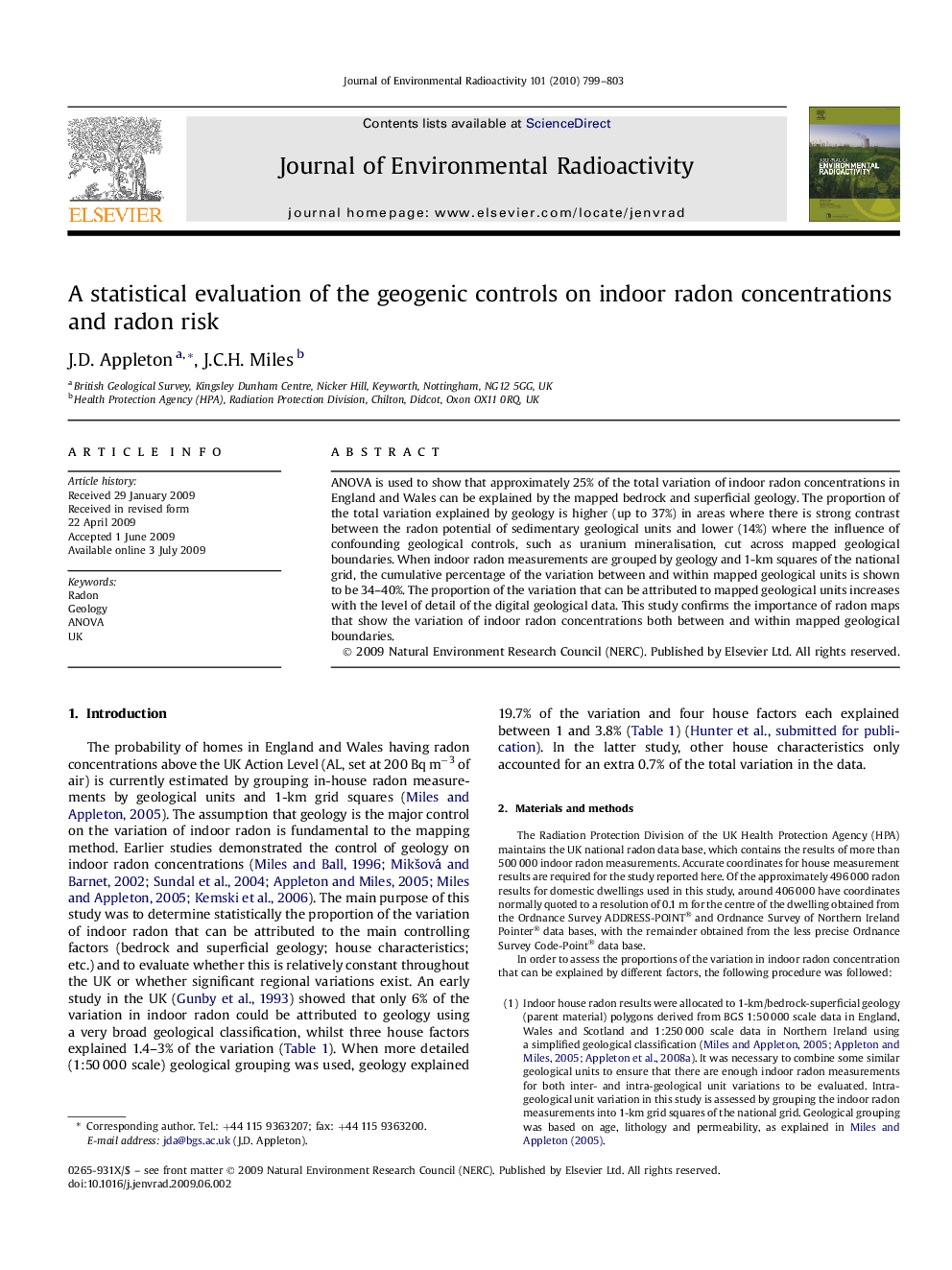| Article ID | Journal | Published Year | Pages | File Type |
|---|---|---|---|---|
| 1738665 | Journal of Environmental Radioactivity | 2010 | 5 Pages |
ANOVA is used to show that approximately 25% of the total variation of indoor radon concentrations in England and Wales can be explained by the mapped bedrock and superficial geology. The proportion of the total variation explained by geology is higher (up to 37%) in areas where there is strong contrast between the radon potential of sedimentary geological units and lower (14%) where the influence of confounding geological controls, such as uranium mineralisation, cut across mapped geological boundaries. When indoor radon measurements are grouped by geology and 1-km squares of the national grid, the cumulative percentage of the variation between and within mapped geological units is shown to be 34–40%. The proportion of the variation that can be attributed to mapped geological units increases with the level of detail of the digital geological data. This study confirms the importance of radon maps that show the variation of indoor radon concentrations both between and within mapped geological boundaries.
